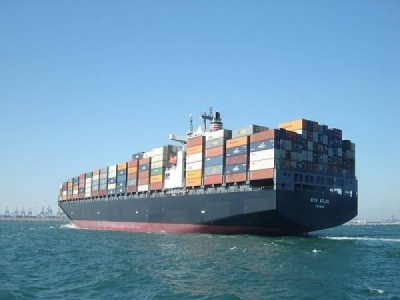
Posted on July 31, 2017
By Rachel Engel, EfficientGov
The long-awaited critical port infrastructure will increase economic development and reduce emissions by eliminating 20 million trucking miles annually.
The demand for critical port infrastructure expansion in the Boston Harbor has been high for years, as shipping vessels become larger, and the need to remain competitive with larger ports on the east coast grows.
In 2014, Congress approved a $310 million dredging project for the U.S. Army Corps of Engineers and Massachusetts Port Authority, authorizing a deepening of the Boston Harbor. The project would allow a new generation of larger containerships more room than the current channels.
Unfortunately, progress was forced to halt after the discovery of a 27-year-old mislaid cable.
Larger Ships Necessitate Critical Port Infrastructure Expansion
As shipping companies look for ways to cut down on transportation costs, one of the innovations is the creation of larger ships that can transport bigger shipments. Mega-vessels, called New Panamax ships, can hold three times as many containers as before, thereby cutting down on the cost of fuel and the amount of trucks needed for offloading.
The Port of Boston is only one of 17 ports in the U.S. that can accommodate the larger ships — but only during high tide.
“Starting last July … we had ships that were 40 to 60 percent larger than we had ever seen,” Lisa Wieland, port director of the Massachusetts Port Authority, said in an interview with the Boston Globe.
We were fortunate that we could accommodate them, but they have to wait for high tide to come in and then they have to wait for high tide again to go out. So, that’s quite challenging, and it can slow them down.”
Deepening the harbor would allow the new larger ships to enter the channels without worrying about the time of day.
Mislaid Utility Power Cable Prevents Port Expansion
In 1990, an underwater cable was laid to provide power to the Deer Island Wastewater Treatment Plant, but did not follow depth requirements as laid out by a U.S. Army Corps of Engineers permit. The cable crosses two channels in Boston Harbor.
As a result, any work to deepen the harbor would damage equipment and become a hazard, according to the Hull Times. To continue the dredging project, the cable would need to be removed and reinstalled at a proper depth.
In an effort to move forward with Boston’s critical port infrastructure expansion, the Army Corps of Engineers and Massachusetts Port Authority filed a lawsuit against the Massachusetts Water Resources Authority (MWRA), which built the Deer Island facility to help clean up Boston Harbor, and Eversource, which laid the cable.
Settlement Clears Path for Critical Port Infrastructure Expansion
On July 13, the Department of Justice (DOJ) reached a settlement with NSTAR Electric Company d/b/a Eversource Energy (NSTAR), NSTAR subsidiary Harbor Electric Energy Company (HEEC) and the MWRA, allowing the dredging project to move forward.
The settlement says a new cable must be laid by the end of 2019, followed by the removal of the original cable.
Source: EfficientGov





